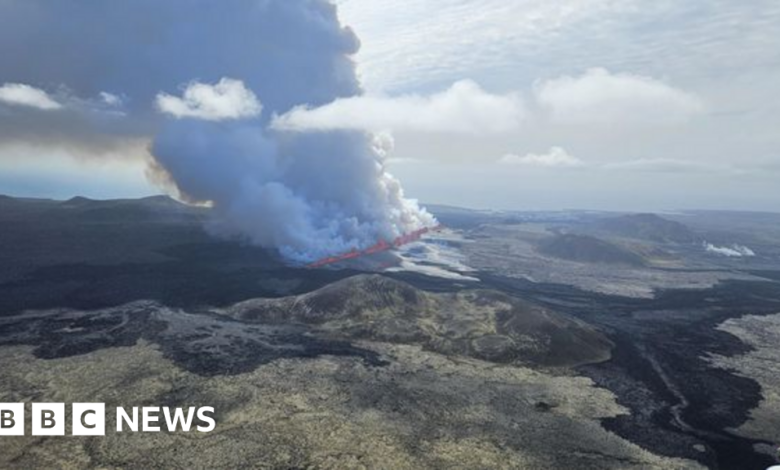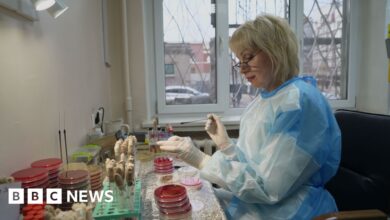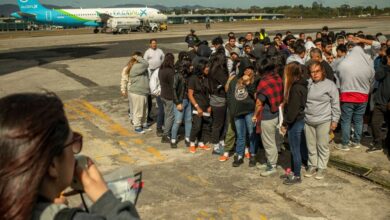Concerns for Grindavik town after new eruption

Another volcanic eruption has begun in southwestern Iceland, forcing the evacuation of the popular geothermal Blue Lagoon resort and the small fishing town of Grindavik.
The new fissure opened near Sundhnuksgigar on the Reykjanes peninsula, the fifth eruption in the area since December.
The Icelandic Meteorological Office (IMO) said the crack was more than 2.5km (1.5 miles) long and was continuing to widen.
A state of emergency was declared and officials urged people to follow evacuation orders after reports of people protesting.
Fannar Jónasson, the mayor of Grindavik, told state broadcaster RUV that he was worried about the amount of lava flowing towards the town, in “much larger volumes” than what has been seen after recent eruptions .
Energy supplier HS Veitur said electricity had been cut in Grindavik as a precaution.
According to local media, three people refused to leave town.
Officials later released a statement to “emphasize that all people in or near Grindavik leave the area and get to a safe distance”.
Currently, all but one road into and out of town is inaccessible.
Footage from the site of the eruption showed a wall of molten rock up to 50 meters high and huge clouds of ash covering most of the sky.
Natural history cinematographer, Benjamin Hardman, documented volcanoes in Iceland and was close to the volcano when it erupted.
“It’s very strange to be here today,” he told the BBC.
“These are strange times on the Reykjanes peninsula.”
The Svartsengi power plant, which provides electricity and water to thousands of people on the peninsula, was also evacuated.
Barriers have been erected around the facility, as well as Grindavik and Blue Lagoon, to try to protect them from lava flows caused by the ongoing eruptions.
Keflavik International Airport said it was operating normally and was not expected to be affected.
Officials reported “intense earthquake activity” before Wednesday’s eruption.
Geophysicist Ari Trausti Gudmundsson said scientists have long predicted a new eruption.
Most of Grindavik’s 4,000 residents were permanently evacuated in November, before the eruption in December, January, February And Steps are.
Lava flows into its streets during the January eruptionsubmerged three houses.
Some residents have returned to live in less risky areas.
Iceland has 33 active volcanic systems and is located on what is known as the Mid-Atlantic Ridge, the boundary between the two largest tectonic plates on the planet.
The last time the Reykjanes Peninsula had a period of volcanic activity was 800 years ago – and eruptions continued for decades.
This is now the eighth eruption since 2021, and scientists believe the region is entering a new volcanic era that could last decades, even centuries.


